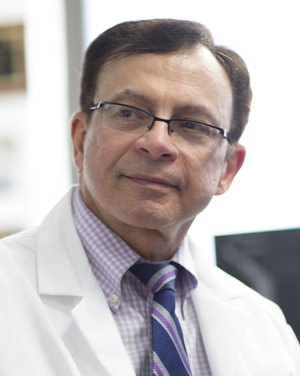The primary interest of our research team is the restoration of respiratory muscle function in individuals with spinal cord injury.
This research emphasizes the role of feedback, muscle mechanical properties of the limbs in the execution and regulation of movements. Current research projects include the control of wrist flexion/extension and elbow extension in patients with spinal cord injuries. Other projects involve the clinical implementation and evaluation of closed-loop stiffness regulation for hand grasp, and the development of muscle models suitable for use in the stimulations with neuronal models.
Subjects with high cervical spinal cord injury levels suffer from respiratory failure and are dependent upon mechanical ventilation. Utilizing restorative electrical stimulation techniques (diaphragm pacing), more normal breathing can be restored. Pacing systems improve mobility, speech and sense of smell, reduce the incidence of respiratory tract infections, and eliminate the need for mechanical ventilation and attached tubing. Restoration of respiratory muscle function can significantly improve overall quality of life and reduce the morbidity and mortality associated with spinal cord injury.
Areas of Interest
- Ongoing clinical feasibility trials of an implanted Spinal Cord Stimulation system to restore an effective cough mechanism in subjects with cervical and thoracic spinal cord injury
- We are also exploring a method of diaphragm and inspiratory intercostal/accessory muscle activation to provide restoration of more normal breathing in subjects with ventilator-dependent spinal cord injury
This project is in the preliminary stages of animal testing and is not yet available for implementation in human subjects.
Research Programs
- Restoration of Cough
Publications (Select)
Entire publication list can be found here.
- DiMarco AF. Diaphragm Pacing. Clin Chest Med. 2018 Jun;39(2):459–471. doi: 10.1016/j.ccm.2018.01.008 Pubmed PMID: 29779603 Kowalski KE, Romaniuk JR, Kowalski T, DiMarco AF. Effects of expiratory muscle activation via high-frequency spinal cord stimulation. J Appl Physiol (1985). 2017 Dec 1;123(6):1525–1531. doi: 10.1152/japplphysiol.00402.2017 Pubmed PMID: 28935824
- DiMarco AF, Geertman RT, Tabbaa K, Polito RR, Kowalski KE. Minimally invasive method to activate the expiratory muscles to restore cough. J Spinal Cord Med. 2017 Oct 11;1–7. doi: 10.1080/10790268.2017.1357916 Pubmed PMID: 29017400
- Romaniuk JR, Dick TE, Bruce EN, DiMarco AF, Kowalski KE. Bifurcation of the respiratory response to lung inflation in anesthetized dogs. Respir Physiol Neurobiol. 2017 Oct;244:26–31. doi: 10.1016/j.resp.2017.06.010 Pubmed PMID: 28698025
- DiMarco AF, Geertman RT, Tabbaa K, Polito RR, Kowalski KE. Economic Consequences of an Implanted Neuroprosthesis in Subjects with Spinal Cord Injury for Restoration of an Effective Cough. Top Spinal Cord Inj Rehabil. 2017 Summer;23(3):271–278. doi: 10.1310/sci2303-271 Pubmed PMID: 29339903
- Kowalski KE, Romaniuk JR, Brose SW, Richmond MA, Kowalski T, DiMarco AF. High frequency spinal cord stimulation-New method to restore cough. Respir Physiol Neurobiol. 2016 Oct;232:54-6. doi: 10.1016/j.resp.2016.07.001. Epub 2016 Jul 6. PubMed PMID: 27395446; PubMed Central PMCID: PMC5012955.
- Kowalski KE, Kowalski T, DiMarco AF. Safety assessment of epidural wire electrodes for cough production in a chronic pig model of spinal cord injury. J Neurosci Methods. 2016 Aug 1;268:98-105. doi: 10.1016/j.jneumeth.2016.05.002. Epub 2016 May 7. PubMed PMID: 27168496; PubMed Central PMCID: PMC4903884.
- DiMarco AF, Kowalski KE. Electrical activation to the parasternal intercostal muscles during high-frequency spinal cord stimulation in dogs. J Appl Physiol (1985). 2015 Jan 15;118(2):148-55. doi: 10.1152/japplphysiol.01321.2013. Epub 2014 Oct 23. PubMed PMID: 25342707; PubMed Central PMCID: PMC4297776.
- DiMarco AF, Dawson NV. Risk factors for mortality in spinal cord injury. J Spinal Cord Med. 2014 Nov;37(6):670–671. doi: 10.1179/2045772314Y.0000000208 Pubmed PMID: 24964865
- Ho CH, Triolo RJ, Elias AL, Kilgore KL, DiMarco AF, Bogie K, Vette AH, Audu ML, Kobetic R, Chang SR, Chan KM, Dukelow S, Bourbeau DJ, Brose SW, Gustafson KJ, Kiss ZHT, Mushahwar VK. Functional electrical stimulation and spinal cord injury. Phys Med Rehabil Clin N Am. 2014 Aug;25(3):631–654, ix. doi: 10.1016/j.pmr.2014.05.001Pubmed PMID: 25064792
- DiMarco AF, Kowalski KE, Hromyak DR, Geertman RT. Long-term follow-up of spinal cord stimulation to restore cough in subjects with spinal cord injury. J Spinal Cord Med. 2014 Jul;37(4):380–388. doi: 10.1179/2045772313Y.0000000152 Pubmed PMID: 24090524
- Iscoe S, DiMarco A. Ventilatory facilitation in spinal cord injury. Am J Respir Crit Care Med. 2014 Jan 1;189(1):12–13. doi: 10.1164/rccm.201312-2114ED Pubmed PMID: 24381990
- DiMarco AF, Kowalski KE. Activation of inspiratory muscles via spinal cord stimulation. Respir Physiol Neurobiol. 2013 Nov 1;189(2):438–449. doi: 10.1016/j.resp.2013.06.001 Pubmed PMID: 2375152
- Kowalski KE, Hsieh Y-H, Dick TE, DiMarco AF. Diaphragm activation via high frequency spinal cord stimulation in a rodent model of spinal cord injury. Exp Neurol. 2013 Sep;247:689–693. doi: 10.1016/j.expneurol.2013.03.006 Pubmed PMID: 23499833
- Dimarco AF, Kowalski KE. Spinal pathways mediating phrenic activation during high frequency spinal cord stimulation. Respir Physiol Neurobiol. 2013 Mar 1;186(1):1–6. doi: 10.1016/j.resp.2012.12.003 Pubmed PMID: 23261850

